Have you ever thought about companion planting for beets? If so, you’re in luck! This guide will provide you with all the information and tips you need to get started on this exciting gardening journey. Before we dive into the details of companion planting for beets, it’s important to understand what companion planting is and why it can be beneficial. Companion planting is the intentional cultivation of two or more plants close together to maximize their growth potential while also minimizing pest damage. By utilizing this practice, gardeners can build a strong ecosystem in their planting area that promotes healthy growth and increased yields of beets.
What Is Companion Planting And How Does It Benefit Beets?
Companion planting is a type of gardening practice in which two or more different plant species are grown together.
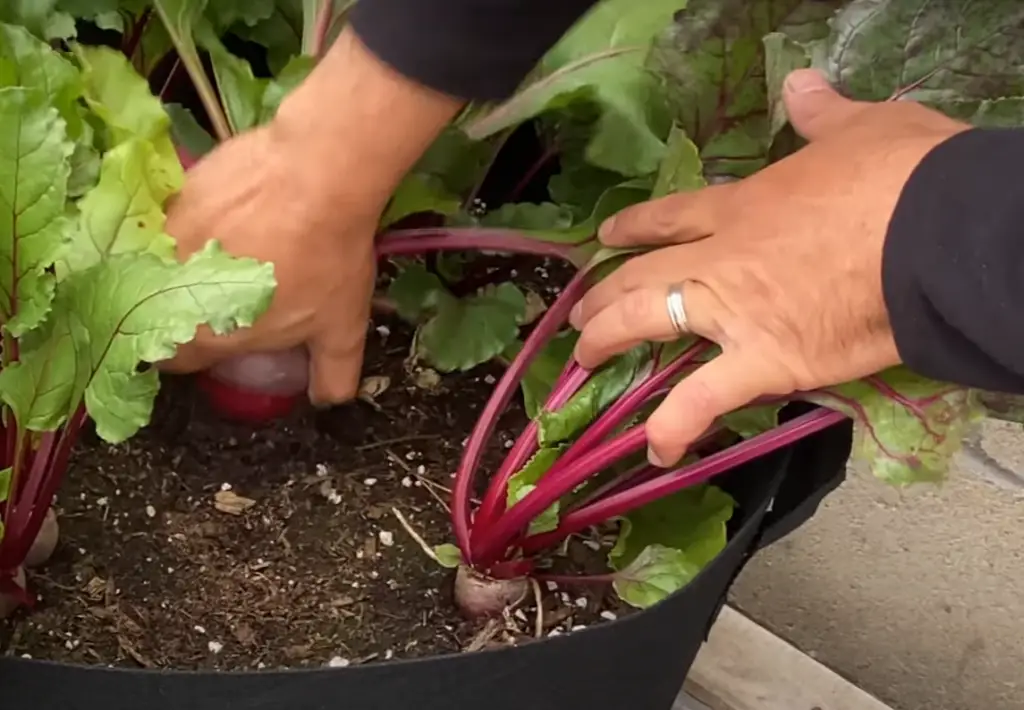
This practice has been used for centuries and has the potential to benefit both plants involved. When it comes to beets, companion planting is beneficial because it can help ward off pests, improve soil quality, provide shade and wind protection, and even increase yields.
Best Companion Plants to Grow With Beets
Beets are a great crop to have in your garden, and they make the perfect companion for a variety of different plants. Here are some of the best companion plants to grow with beets.
Broccoli
Broccoli is a great companion for beets because their root systems are quite different. Broccoli has an extensive, deep root system while beets have shallow roots, so they don’t compete for the same nutrients. Additionally, broccoli helps to repel pests that may be attracted to beet plants. Plant broccoli around your beet rows to provide additional protection against pests as well as provide more variety in your garden. Be sure to give each plant enough space when planting them together — at least 18 inches apart should do the trick!
Brussels Sprouts
Brussels sprouts are a perfect companion for beets! Not only do they look lovely planted together, but they also benefit from each other in terms of nutrition. The strong foliage of the Brussels sprouts helps to protect the beets from too much sun exposure, while the beet roots help to aerate and enrich the soil around the Brussels sprouts. Planting garlic or onions nearby can also help with pest control and further enhance flavor. When harvesting, make sure to pick out any wilted leaves that may attract pests or diseases. Enjoy your delicious combo side dish!
Bush Beans
Planting bush beans alongside beets is beneficial as they are compatible plants. Not only do they provide nitrogen-rich soil for the beets, but they also work as a physical barrier against pests while providing shade from intense sunlight. Additionally, planting bush beans alongside your beets will help reduce weed growth and help keep the soil moist and healthy.
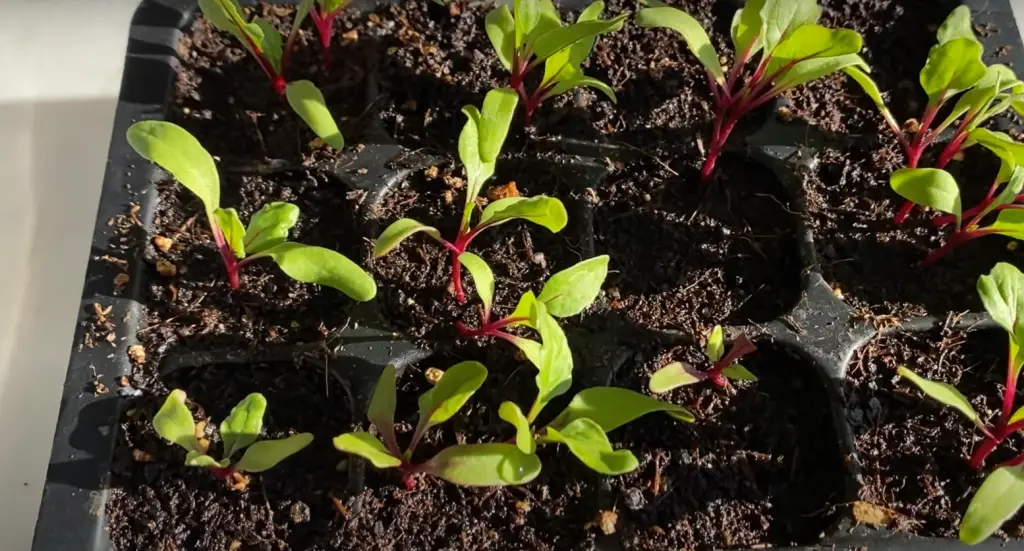
Bush beans are easy to grow and require little maintenance, making them an ideal choice for novice gardeners. To get the most out of your beet crop, make sure you give these helpful beans plenty of room to spread out and thrive! With their bright flowers and delicious harvests, bush beans will add beauty and flavor to any vegetable garden!
Cabbage
Cabbage helps to repel troublesome pests such as aphids and flea beetles. Planting beets and cabbage together can also help improve the flavor of both vegetables. Additionally, the roots of cabbage plants release substances that can suppress weeds in beet patches, reducing the need for weeding. Finally, because both crops are cool-season vegetables, they grow best when planted at the same time during early spring or late summer. Keep in mind that cabbage has a long growing season (up to 8 weeks) so make sure you give it enough space when planting in your garden.
Catnip
Catnip (Nepeta cataria) attracts beneficial insects that help protect plants from pests. Plant catnip near your beets to bring in bees, hoverflies, and other pollinators. Catnip also has a strong scent which keeps some pests away. As an added bonus, you can use the leaves of this herb as a delicious tea or spice for cooking!
For best results, keep it contained in its own container or planter box. Enjoy the protection and flavor catnip will add to your beets!Also, note that if planting catnip with beets, you should water it with a liquid fertilizer every two weeks. This will help ensure that both plants get the nutrients they need. Finally, be sure to keep catnip away from other vegetables in your garden as some people may find the smell unpleasant. That way, everyone can enjoy this beneficial companion plant!
Cauliflower
Cauliflower is a great companion plant for beets. Not only does it help keep weeds down, but it also adds some nutrients to the soil that are beneficial for both plants. Planting cauliflower with your beets helps protect them from various pests and diseases, making your garden thrive! Make sure you give your cauliflower enough space to grow, as overcrowded conditions can reduce its growth potential. Additionally, using companion planting techniques like intercropping will maximize the efficiency of your garden. Try planting small patches of each vegetable within each other’s reach – this provides shade for both plants and helps create a more sustainable environment overall. Enjoy fresh cauliflower alongside delicious beet-based dishes all season long!
Kohlrabi
Kohlrabi is an ideal companion plant for beets. It not only provides shade to the beets, but also helps keep away pests and diseases that can harm the crop. Kohlrabi also has a high nitrogen content which aids in promoting the healthy growth of beet plants.
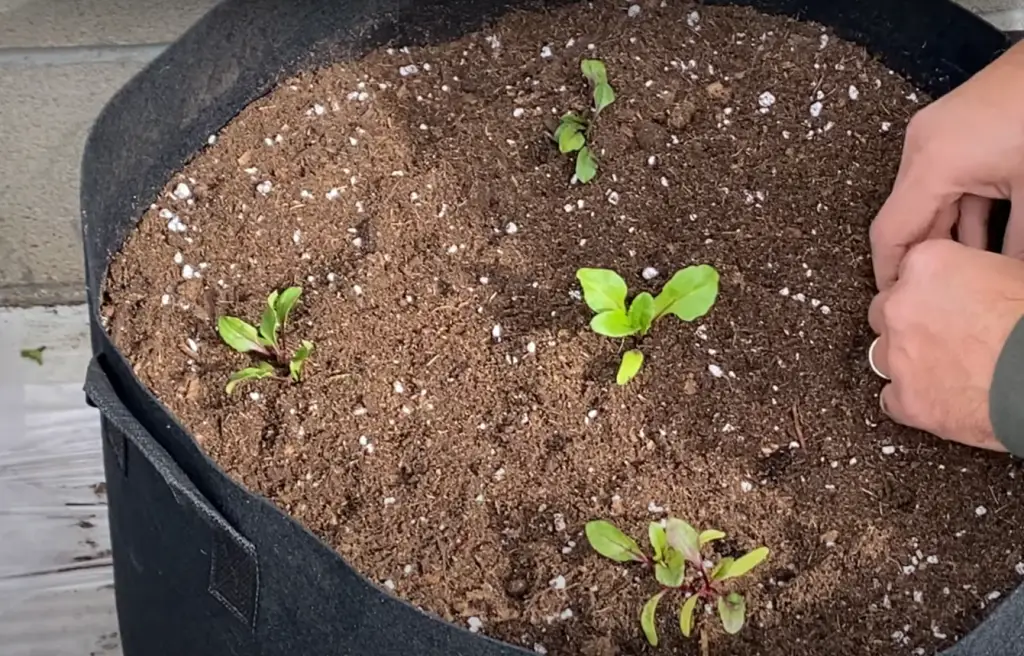
Plus, it’s easy to grow and harvest! When planting kohlrabi alongside your beets, make sure you provide enough spacing so they have room to grow and access to plenty of sunlight. Watering regularly will help ensure good growth as well. Kohlrabi should be harvested when its bulbous stem reaches around 2 inches in diameter – this is usually about two months after planting. Enjoy the delicious rewards of kohlrabi as part of your beet crop!
Leeks
Leeks are another excellent companion for beets. They can help deter various pests, and they work well together in terms of nutrient needs. Plus, leeks are a great addition to salads and soups when harvested while still young. When planting leeks beside beets, make sure you give them plenty of room to grow so that the roots have space to develop. Leeks can also be interplanted with other vegetables like onions and carrots. If you’re looking for more pest protection for your beet crop, try growing marigolds alongside your leek-beet combination; these bright flowers will create a colorful and beneficial contrast in your garden while keeping pesky insects away!
Lettuce
Beets and lettuce grow well together as companion plants. Not only can it help keep away pesky pests, but it also provides the perfect shade when beets are planted in hot weather. Be sure to provide enough space between lettuce and beets so that both can thrive. Lettuce thrives best in moist soil with lots of organic matter. Additionally, you should avoid using nitrogen-rich fertilizer near your lettuce plants since this may inhibit their growth. Lastly, when harvesting beet greens, try not to disturb the lettuce nearby as this could damage its roots. With these few simple tips in mind, you’ll have delicious lettuces and healthy beets growing side by side!
Marigolds
Marigolds are a great companion plant for beets. They can help to repel insect pests and improve the flavor of the beets. Marigolds also attract beneficial insects such as lacewings, hoverflies, and ladybugs which can help keep harmful pests away from your plants. To get the best results, plant marigolds near your beets every two weeks throughout the season. You can also use them as an ornamental border around your beet patch or mix them in with other companion plants for even more protection! And once they’re done blooming, you can add them directly to your compost pile for added nutrition for future crops.
Onions
Onions are the perfect companion plants for beets. Not only do they help to deter pests from your beet crop, but their strong smell can also mask the scent of the beets, making them less attractive to pest insects. Additionally, onions also provide many nutrients to the soil which can benefit your beets and help them grow better. When planting onions near beets, make sure you give plenty of space for both vegetables to have enough space for air circulation and no overcrowding.
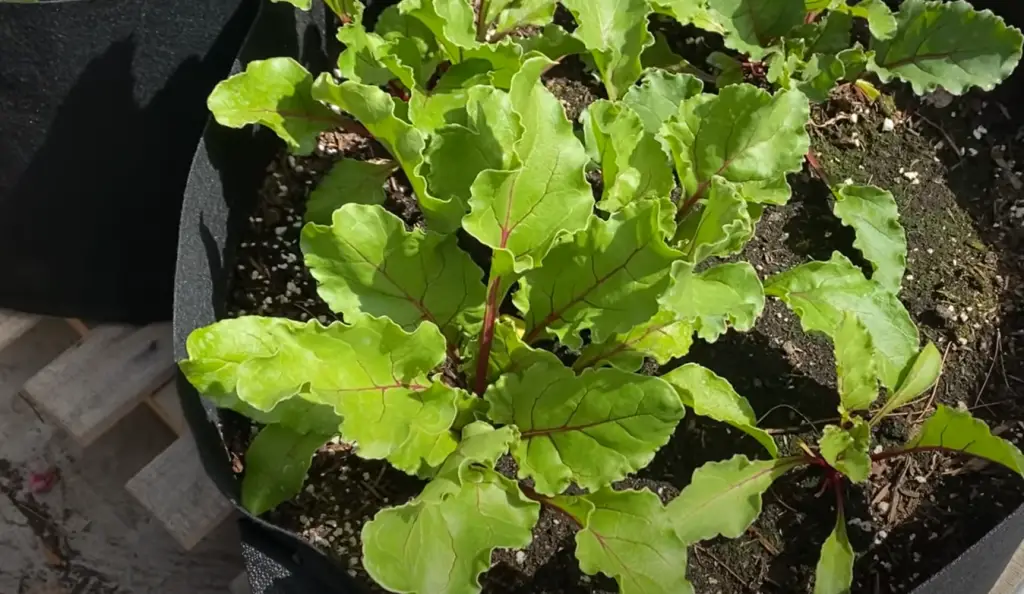
This will prevent disease problems from occurring in your garden. And finally, as a bonus, harvesting onions near beets makes it easier: when pulling up one vegetable, you’ll likely pull up the other too!
Radishes
Radishes are one of the best companion plants for beets. Not only do they share similar nutrient needs and growth habits, they also tend to repel pests that can damage your beet crop. When planting radishes with beets, it’s important to choose varieties that mature at different rates for optimal harvests. Planting fast-maturing radish varieties will ensure you get a harvest before the slower-maturing beets take over the space. Radishes also add a spicy flavor to salads made from young beet leaves!
Sorrel
Sorrel is another great companion plant for beets. It’s an easy-to-grow annual that adds a nice lemony flavor to salads. Sorrel has the added bonus of helping to deter pests from other vegetables in the garden, so it’s not only useful for enhancing your beets but also for keeping them safe from harm.
It also helps protect against fungal diseases and may even help reduce weed growth. Plus, it looks really pretty when planted around beets! All you need to do is sow some seeds near your plants in the springtime, then enjoy its lemony flavor all season long. Just make sure not to let it take over the rest of your garden.Spinach
Spinach is a wonderful companion for beets as they both require similar growing conditions, such as warm temperatures and full sun. Planting spinach alongside beets helps to protect them from pests and diseases while also improving their yields. Spinach can help to attract beneficial insects like ladybugs that will help control destructive pests. Be sure to keep your spinach well-watered during dry weather, and thin out the plants if you notice overcrowding. You can also use mulch around the base of the plant to conserve moisture and discourage weed growth. Enjoy this nutrient-rich vegetable in salads, soups, or stir-fries!
Garlic
Garlic can actually help beets grow faster! When growing garlic next to your beets, make sure to plant the cloves 8-10 inches away from the beet roots. This way, both plants will have plenty of space to spread out and won’t compete for nutrients in the ground.
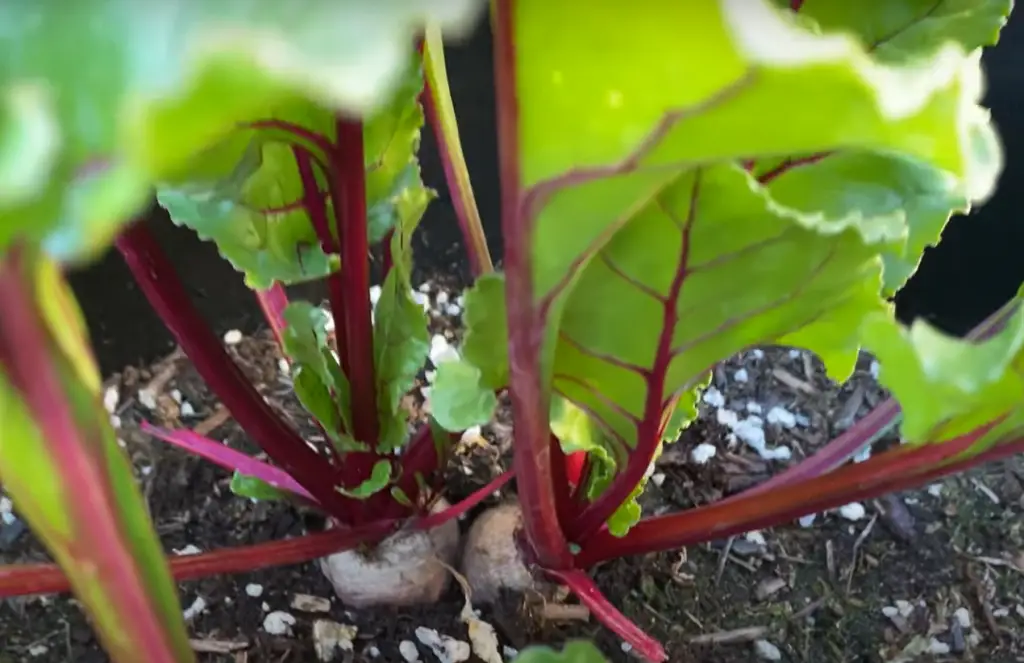
Garlic has anti-fungal properties which can help keep pests away from your beets too. Planting garlic near your Beets will also provide an extra boost of flavor when you harvest them later on. Enjoy all the benefits of this strong yet aromatic vegetable!
Aromatic Herbs
Aromatic herbs make excellent companion plants for beets. They help keep pests away and encourage pollination, while also adding wonderful flavor and aroma to your garden. Some of the best aromatic herbs to plant with beets are basil, dill, oregano, parsley, rosemary, sage, and thyme. Basil is an especially good choice since it helps deter cabbage maggots from attacking beet plants. Plant these herbs in rows near your beets or mix them in with the rows for a fragrant salad creation!
Brassicas
Brassicas are a family of vegetables that includes the likes of broccoli, kale, and cauliflower. They also include some tasty varieties like turnips, kohlrabi, and rutabagas. These vegetables pair particularly well with beets when planted in close proximity. Brassicas have several benefits when paired with beets – they can help to increase yields, reduce pests and diseases, as well as provide more nutrients to the soil. When planting brassicas alongside your beets, make sure to do so at least 4-6 weeks before harvesting the beets so that the two plants don’t compete for resources and space. Additionally, since brassicas mature earlier than beets, you may want to stagger their planting by a week or two.
Corn
Beets can provide much-needed shade for corn, while the corn stalks give the beets extra support and improved air circulation. Plant your corn seeds about two weeks before planting your beet seeds, to make sure they’re well established when you put in the beets. This combination will help deter nematodes, which often attack root crops like beets. Both crops also need plenty of sun and water, so take this into consideration when planning out your garden space.
This will ensure that both have enough space to grow properly!Oats
Oats are one of the most recommended companion plants for beets. They have several benefits that make them a perfect partner for this crop, such as providing shade to young seedlings, improving soil structure, and helping to prevent erosion. Oats also act as a trap crop to attract pests away from your beet plants. Finally, it can help in increasing the population of beneficial insects like ladybugs. Planting oats with your beets will ensure the strong and healthy growth of both crops throughout the growing season.[1]
Worst Beets Companion Plants
Beets are root vegetables that can be grown in a variety of areas, including containers. When you plant them it is important to be mindful of which companion plants will work best with them. Below is a list of the worst companion plants for Beets.
Pole Beans
Pole beans are one of the worst companion plants for Beets. When planted together, Pole Beans will compete with the beets for important nutrients like nitrogen and potassium. In addition, Pole Beans can grow over the top of the Beets and shade them out, reducing their yields.
Field Mustard
Field Mustard is a weed that can prove to be detrimental when planted near Beets. It will take away from the nutrients needed by the Beets and also harbor pests, such as aphids, which can harm the Beets.
Chard
Chard and Beets are closely related, so when planted in close proximity they can cross-pollinate. This will result in inferior quality products and cause a decrease in yield. [2]
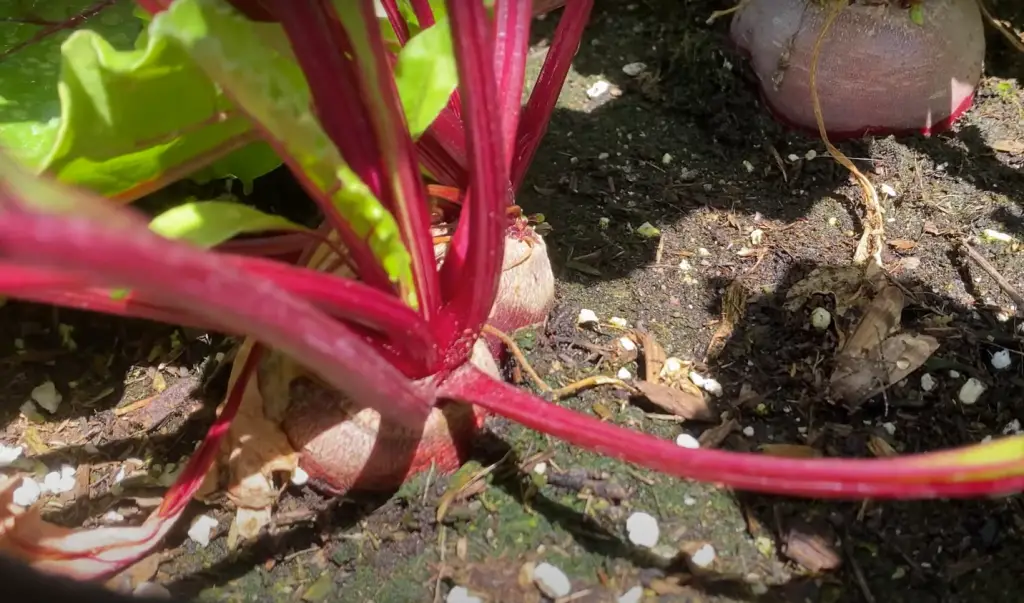
By avoiding these companion plants for Beets you can ensure that your Beet crop is healthy and productive. When planning the layout of your garden it’s important to keep these plants separated from your Beets to get the best possible results.
FAQ
What is good to plant next to beets?
Beets are a great addition to the garden, and they pair well with many other plants. Some of the best companion plants for beets include leafy greens such as lettuce and spinach, root crops like onions, carrots and radishes, herbs such as parsley and chives, as well as brassicas like cabbage and broccoli. Interplanting these types of vegetables can benefit all of them by adding nutrients to the soil or providing shade from intense sunlight. Additionally, some of them may deter pests away from your beets. It’s important to remember not to overcrowd your rows or beds – give each plant enough space to grow properly! If this is a concern, consider using containers or raised beds so that you have more control over the layout. [3]
What not to plant next to beets?
You want to be careful what you plant next to your beet plants. Some plants don’t like their companion, so make sure to research anything you plan on planting near them!
Beets are sensitive and can easily be damaged by certain chemicals found in other plants. Therefore, it’s important that you avoid planting any of the following near them:
- Pole Beans – Pole beans excrete a chemical called ‘gibberellic acid’ that can stunt the growth of your beet plants.
- Field Mustard – Field mustard excretes a chemical called ‘allyl isothiocyanate’ which can react with the soil and make it unsuitable for beet plant growth.
- Charlock – Charlock is an invasive weed that can quickly overtake your beet plants and choke them out [4]
Can beets and tomatoes be planted together?
Tomatoes and beets can be grown in close proximity without causing harm to each other, but there are no significant benefits to their coexistence. Because beets require deep, fertile soil to grow, planting tomatoes in the same area can rob the beets of nutrients and moisture. In addition, both plants can become susceptible to certain diseases if planted too close together. To maximize your harvest from either crop, it is recommended that you plant them no closer than 12 inches apart. [5]
What herbs can you plant with beets?
Beets pair well with aromatic culinary herbs like thyme, hyssop, rosemary, and all types of mint that have a strong scent. Combining these herbs will not only add flavor to your beets but can also ward off some pests that detest the scent of aromatic herbs. If you want to keep cabbage moths at bay, plant sage and oregano with your beets as they are especially resistant to this particular pest. You can also grow chives and garlic alongside your beets, as these will strengthen the flavor without overwhelming it. Additionally, if you are looking for a nutrient-rich companion for your beets, try planting peas or beans nearby. They’ll give much-needed nitrogen to the soil around them and provide an additional source of nutrition for both plants.
Apart from culinary herbs, there is a variety of flowers that make excellent companions for beets. Marigolds, nasturtiums, and cosmos will not only bring a splash of color to your garden but also help protect your beets from pests. Additionally, if you want to attract helpful pollinators like bees or butterflies, try planting some sunflowers near your beets. [6]
As with any type of gardening, make sure that you take into account the needs of each plant before planting them together in one area. For instance, companion plants should have compatible water requirements so that they don’t compete for resources. Also, keep an eye out for aggressive root systems that may interfere with the growth of neighboring plants. With these tips in mind, growing beets alongside other plants can make for a successful garden.
Useful Video: THE BEST COMPANION PLANTS FOR BEETS OR BEETROOT!! GROW THESE NEXT TO YOU BEETS FOR CRAZY GROWTH!
Conclusion
Companion Plant for Beets is a great way to ensure that your beets thrive and produce the best quality crop possible. Be sure to research which types of companion plants are best suited for specific climates and soil types before planting them together with your beets. With some careful planning, you can create an effective companion planting system that will help your beet crop flourish. And don’t forget to keep weeds at bay so that your companion plants get the nutrients they need! Thanks for reading our guide! We hope this has been helpful in giving you the knowledge and confidence to try out this ancient gardening technique. Good luck!
References:
- https://gardenerspath.com/plants/vegetables/beet-companions/
- https://www.gardeningchores.com/beets-companion-plants/
- https://www.masterclass.com/articles/beets-companion-planting-guide
- https://www.gardeningchores.com/beets-companion-plants/
- https://www.littleyellowwheelbarrow.com/beet-companion-plants/
- https://insteading.com/blog/companion-planting-for-beets/





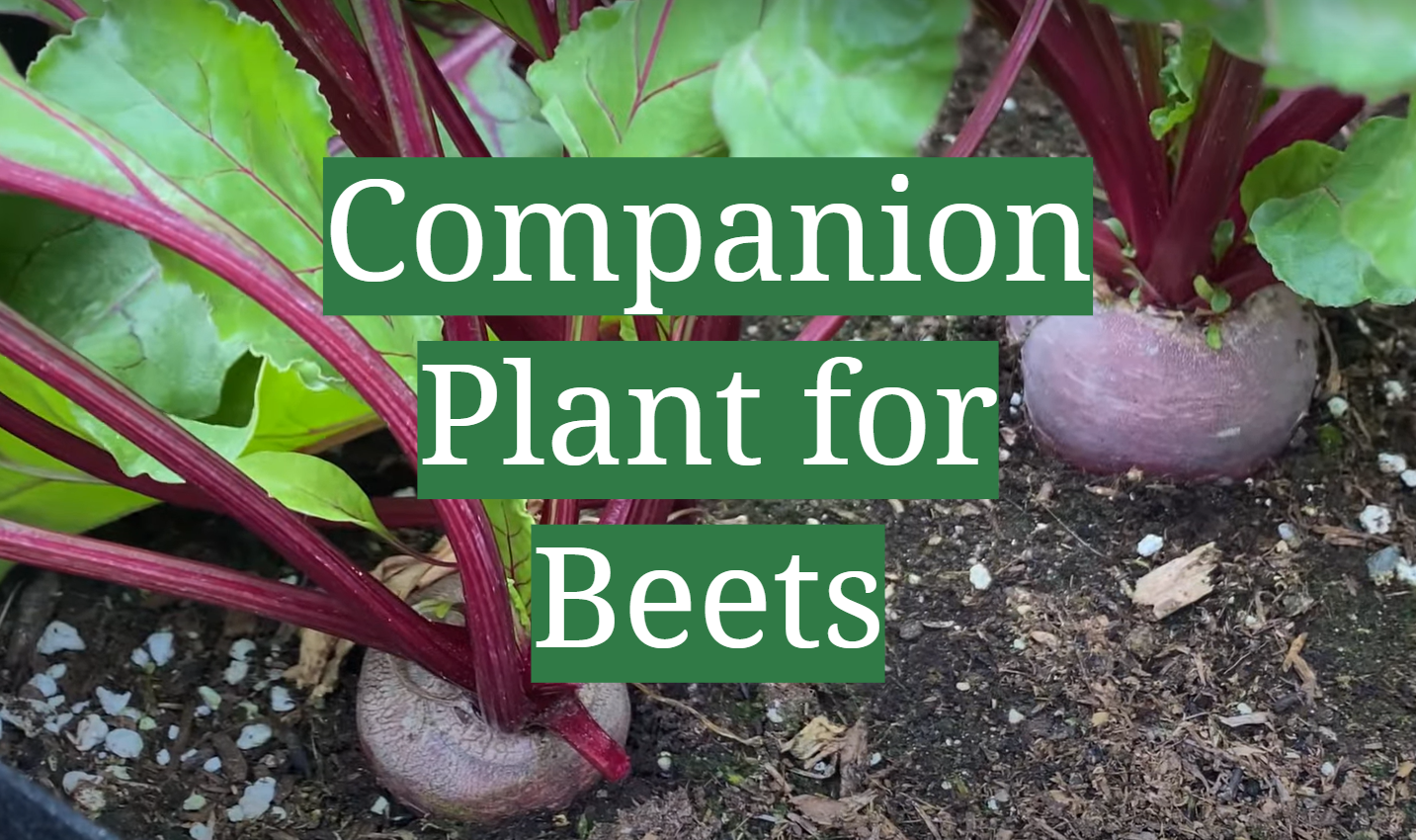




Leave a Reply
View Comments